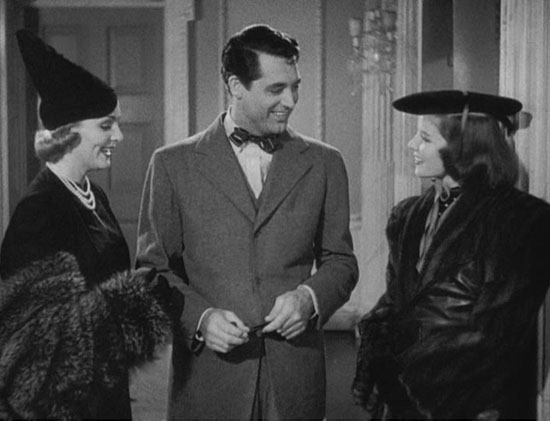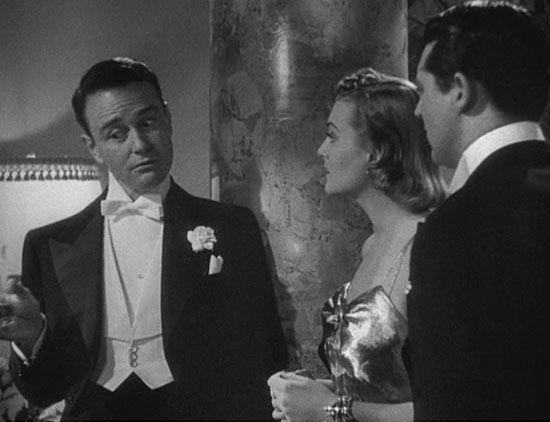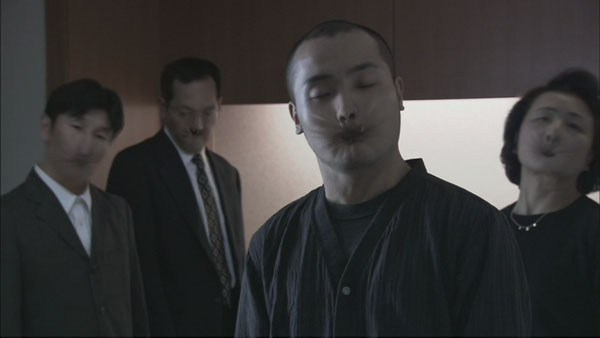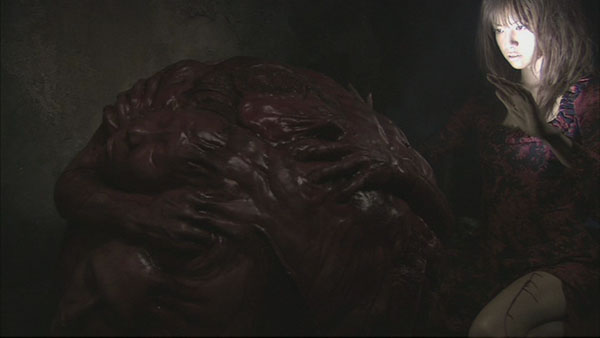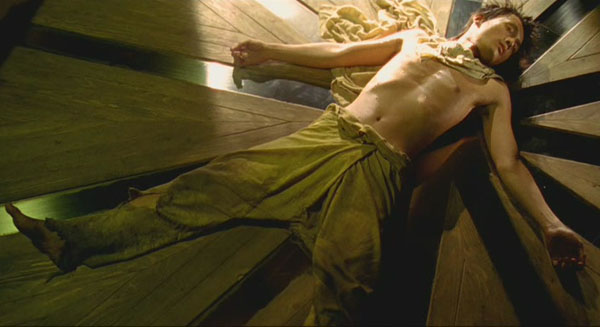Supposedly part of a comic deadpan losers trilogy, but given what little I’ve seen of Kaurismaki’s cinema (Hamlet Goes Business and two shorts) it seems you could grab any three movies and call those his comic deadpan losers trilogy. This wasn’t awfully comic, either. I remember laughing a bit in the first half hour, but after our hero goes to jail and gets increasingly hopeless and depressed, nobody would call it a comedy anymore.
Koistinen is a loser security guard with a good heart and little apparent sense, no interests and no friends. One day a hot blonde starts pursuing him. They date, she asks questions about his job, finally drugs him, steals his keys and hands them over to her actual gangster boyfriend who robs the jewelry store Koistinen was supposed to be protecting. K. spends some time in jail (framed for participating in the heist), gets out, lands in a halfway house, is fired from an even more menial job as a dishwasher (again prompted by the fatale girl’s boyfriend) and in the last minute is found destitute on the streets by the snack bar girl who always liked him and given a happy, hopeful final couple of seconds (in the film, not in his life – he survives).
I was enjoying the rock songs. I thought one of ’em was in the same style as “Rich Little Bitch” from Hamlet Goes Business, until I realized it’s the exact same song. He used the same song (and prominently) in two movies twenty years apart. Movie is great to look at, and very Jarmusch-cool (although I know it’s actually vice-versa) but the story is kinda minor and depressing.
V. Rizov:
Newcomers to Kaurismäki should understand that a character’s facial expressions give almost no clue as to what’s going on; everyone has a poker face that makes Buster Keaton look thoroughly emotive. A visit to Kaurismäki’s land of perpetual misery is always perversely comic — the characters and situations shoot past miserabilist drudgery quickly: The worse things get, the funnier they are. But Kaurismäki’s sentimentality is a double-edged sword, as it prevents his movies from being shallow one-note exercises but can also suck the life from them.
I. Johnston:
Underneath it all, and in spite of a popular tendency to read his films along hip-cool-quirky lines, Kaurismaki is an old-fashioned romantic, layering his films with a charming retro appeal. There’s a wider political-ideological connotation to this, a deliberate disassociation from the values of the globalised monetarist contemporary world in favour of those “loser” heroes of his who simply fail (where they don’t more overtly refuse) to adapt to the demands of that world. Kaurismaki loves his characters, those few — in the case of Lights in the Dusk, Koistinen and Aila — who maintain values of humanity, authenticity, love, and moral action. And the director places them in a social environment that seems out of kilter with the modern world: hence, the retro décor, the pop songs from years past, the tango music, and the old-fashioned rock’n’roll (hip-hop’s made no impact here).
The snack bar girl apparently plays the lead in that movie about the photographer for which I saw trailers for three months before it came and went quietly one week at the Landmark.
